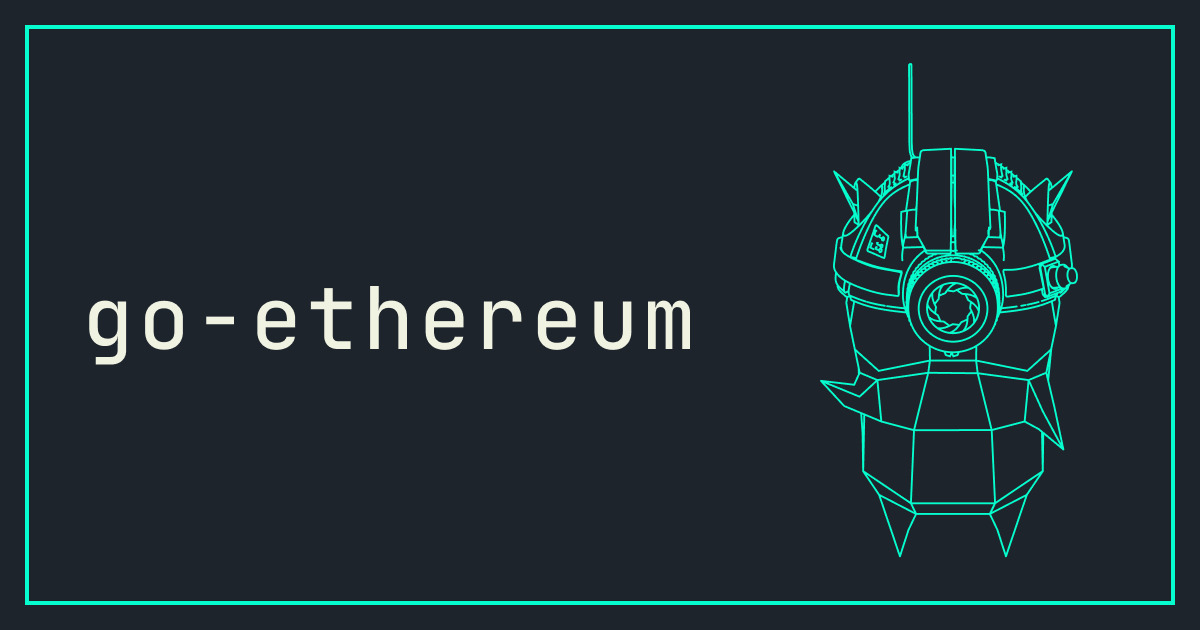Introduction
Welcome to the world of Ethereum, a decentralized blockchain platform that has revolutionized the way we think about and engage with digital assets. Behind the scenes, there is a hidden network of nodes that play a crucial role in ensuring the smooth operation of the Ethereum ecosystem.
In this article, we will explore the concept of Ethereum nodes and delve into the significance of these nodes in the context of the Ethereum network. We will also shed light on the factors that influence the number of Ethereum nodes and discuss the benefits of running a node. To wrap it up, we will provide you with a simple guide on how to check the number of Ethereum nodes currently active in the network.
Before we dive into the details, it’s important to understand what exactly an Ethereum node is and why it is of utmost importance in the Ethereum network.
So, what exactly is a node in the context of Ethereum?
An Ethereum node refers to any device, such as a computer or server, that participates in the Ethereum network by maintaining a copy of the entire blockchain, validating transactions, and relaying information to other nodes. Each node on the network serves as a building block that enables the decentralized nature of Ethereum.
Without a robust network of nodes, the Ethereum blockchain would be vulnerable to various security risks, centralization, and disruptions. The nodes collectively ensure that the network is secure, immutable, and resistant to censorship.
Now that we have a basic understanding of what an Ethereum node is, let’s explore the significance of these nodes in the Ethereum network.
What is an Ethereum Node?
An Ethereum node is a participant in the Ethereum network that maintains a copy of the entire blockchain and plays a vital role in the validation and propagation of transactions and blocks. Essentially, it functions as a gateway that connects users to the decentralized Ethereum platform.
There are different types of Ethereum nodes, each serving a specific purpose:
- Full Nodes: Full nodes are the backbone of the Ethereum network. They download and validate every transaction and block, keeping a complete copy of the entire blockchain. These nodes serve as validators and ensure the integrity and security of the network. They can also participate in mining if they meet the necessary requirements.
- Archive Nodes: Archive nodes store and maintain the complete history of the Ethereum blockchain, including all historical states and transactions. These nodes are essential for developers and researchers who require access to historical data for analysis and building applications.
- Light Clients: Light clients are lightweight nodes that do not store the entire blockchain. Instead, they rely on full nodes to validate transactions and provide them with the necessary data. Light clients are commonly used on mobile devices or devices with limited storage and computing power.
Running an Ethereum node requires a significant amount of computational resources and a stable internet connection. However, the benefits of running a node extend beyond being a simple participant in the network.
In the next section, we will explore why Ethereum nodes are important and the role they play in maintaining the decentralized nature of the Ethereum network.
Why are Ethereum Nodes Important?
Ethereum nodes are at the core of the Ethereum network and play a pivotal role in ensuring its security, integrity, and decentralization. Here are a few reasons why Ethereum nodes are important:
- Blockchain Validation: Ethereum nodes validate and verify every transaction and block added to the blockchain. This process helps to maintain the accuracy and integrity of the blockchain. Without the diligent work of nodes, the network would become vulnerable to fraudulent transactions and attacks.
- Decentralization: Ethereum nodes are instrumental in preserving the decentralized nature of the Ethereum network. By running independent nodes, individuals contribute to the distributed network infrastructure, preventing centralization and ensuring that no single entity has control over the network.
- Network Stability: The more nodes there are in the Ethereum network, the more stable and resistant it becomes against various forms of attacks and disruptions. Additionally, a larger number of nodes improves the efficiency and speed of transaction validation and propagation.
- Data Redundancy and Availability: Each Ethereum node stores a complete copy of the blockchain, making the data redundant and ensuring its availability. This redundancy makes the network resilient against data loss or failure of individual nodes, as other nodes can provide the necessary information.
- Consensus Mechanism: Ethereum nodes participate in the consensus mechanism, which determines the validity of transactions and the order in which they are added to the blockchain. Through communication and agreement among nodes, a consensus is reached, ensuring the accuracy and trustworthiness of the blockchain.
Overall, Ethereum nodes are fundamental to the proper functioning of the Ethereum network. They contribute to its security, decentralization, stability, and availability. By running an Ethereum node, individuals actively participate in maintaining the health and integrity of the blockchain, while also benefiting from the advantages that come with being part of a decentralized network ecosystem.
Now that we understand the importance of Ethereum nodes, let’s explore the factors that can affect the number of nodes in the network.
How Many Ethereum Nodes are there?
The number of Ethereum nodes fluctuates over time due to various factors such as network conditions, node operators’ preferences, and technological advancements. At any given moment, the exact number of active Ethereum nodes can vary, but there are several ways to estimate this figure.
One approach to checking the number of Ethereum nodes is by looking at public monitoring websites that provide real-time statistics. These websites monitor the network and collect data from different nodes to give an estimate of the current node count.
Another method is to analyze the Ethereum network through the use of tracking tools offered by major Ethereum clients. These tools can provide insights into the number of active nodes connected to specific client versions.
It is worth noting that the Ethereum network consists of different types of nodes, including full nodes, archive nodes, and light clients. The number of nodes can vary for each type, as some node operators choose to run specific types of nodes based on their needs and available resources.
The Ethereum network’s decentralization is a fundamental aspect, and the number of nodes contributes to its overall robustness. While the exact number of Ethereum nodes at any given time can be challenging to determine, it is generally understood that a greater number of nodes signifies a healthier and more resilient network.
Next, let’s explore the factors that can influence the number of Ethereum nodes in the network.
Factors Affecting the Number of Ethereum Nodes
The number of Ethereum nodes in the network is influenced by various factors that can impact the decision of individuals or organizations to run a node. Understanding these factors can help explain the fluctuations in the number of nodes over time. Here are some key factors affecting the number of Ethereum nodes:
- Technical Requirements: Running an Ethereum node requires a certain level of technical knowledge and resources. It typically necessitates a computer or server with sufficient storage capacity, processing power, and a stable internet connection. The technical requirements can be a barrier for some individuals or organizations who do not possess the necessary infrastructure to run a node.
- Cost: Setting up and maintaining an Ethereum node comes with costs, including hardware, electricity, and internet bandwidth. These expenses can vary depending on the type of node and the scale of operations. For some, the costs may outweigh the benefits, leading to a lower number of nodes.
- Network Connectivity: A stable and reliable internet connection is essential for running an Ethereum node effectively. In regions with limited or unreliable internet connectivity, the number of nodes may be lower since individuals or organizations may face connectivity challenges.
- Specialization Requirements: Different use cases within the Ethereum ecosystem require specific types of nodes. For example, developers and researchers may run archive nodes to access historical data, while regular users may opt for lighter client implementations. The diversity of use cases can influence the distribution of node types within the network.
- Incentives: In some cases, individuals or organizations may be motivated to run an Ethereum node based on the incentives provided by the network. These incentives can take the form of financial rewards or governance-related benefits. The presence or absence of such incentives can impact the number of participants running nodes.
- Technological Advancements: As Ethereum evolves and new technologies are introduced, the technical requirements and efficiency of running a node may change. Technological advancements that reduce the resource requirements or improve the scalability of Ethereum nodes can attract more participants to run nodes.
It’s important to note that these factors are interconnected and can influence each other. For example, advancements in technology may lead to lower costs for running a node, which in turn can incentivize more individuals to participate. Additionally, the network’s growth and adoption can also influence the number of nodes, as more users and organizations connect to the Ethereum network.
Now that we understand the factors influencing the number of Ethereum nodes, let’s explore the benefits of running an Ethereum node.
Benefits of Running an Ethereum Node
Running an Ethereum node offers several benefits to individuals and organizations that choose to participate in the network. By contributing to the decentralized infrastructure, node operators can take advantage of the following benefits:
- Security: Running a node allows individuals to independently verify and validate transactions, enhancing the security of their own transactions and the overall network. By participating in consensus protocols, node operators contribute to the robustness and integrity of the Ethereum blockchain.
- Privacy: Running a personal Ethereum node provides users with greater privacy and control over their transactions. Users can connect to their own nodes instead of relying on third-party services, reducing the exposure of personal data and reducing the risk of privacy breaches.
- Supporting Decentralization: Each new Ethereum node strengthens the decentralized nature of the network. By running a node, individuals actively participate in maintaining the distributed infrastructure of Ethereum, preventing centralization and ensuring equal access to the network for all participants.
- Economic Incentives: Depending on the type of Ethereum node being operated, there may be economic incentives available. For instance, individuals running full nodes with adequate computational resources can participate in mining and earn rewards for their contributions to the network.
- Keep Up-to-Date: Running a node ensures that users have the most up-to-date Ethereum software. This allows them to take advantage of new features, improvements, and bug fixes, thereby staying current with the latest developments in the Ethereum ecosystem.
- Access to Historical Data: Certain types of Ethereum nodes, such as archive nodes, store complete historical data of the blockchain. Researchers, developers, and analysts can benefit from running such nodes as they require access to long-term historical data for analysis, testing, or auditing purposes.
When running an Ethereum node, it’s important to consider the associated costs and technical requirements. However, the benefits of increased security, privacy, and support for network decentralization make running a node a worthwhile endeavor for many individuals and organizations.
Now that we have explored the benefits of running an Ethereum node, let’s learn how to check the number of active nodes in the Ethereum network.
How to Check the Number of Ethereum Nodes
If you’re interested in knowing the current number of active Ethereum nodes on the network, there are a couple of methods you can use to check this information:
- Public Monitoring Websites: Several public monitoring websites provide real-time statistics on the Ethereum network, including the number of active nodes. These websites collect data from different nodes and present it in an easy-to-read format. Some popular monitoring websites include Ethernodes.org, Ethstats.net, and Etherscan.io. By visiting these websites, you can get an estimate of the total number of Ethereum nodes currently active.
- Ethereum Client Tracking Tools: Ethereum clients like Geth, Parity, and OpenEthereum offer tracking tools that allow you to check the number of active nodes connected to their specific client versions. These tools can provide insights into the distribution and prevalence of the client’s nodes on the network. You can usually access these tools through the client’s official website or by consulting their documentation.
By using these tools, you can gather information about the current node count and gain a better understanding of the Ethereum network’s health and decentralization.
Keep in mind that the number of Ethereum nodes can change over time as nodes join or leave the network. Therefore, the figures you obtain may vary slightly depending on the moment of measurement and the tracking methodology used.
Now that you know how to check the number of active Ethereum nodes, it’s time to wrap up our exploration of this important aspect of the Ethereum ecosystem.
Conclusion
Ethereum nodes play a crucial role in the decentralized and secure operation of the Ethereum network. They validate transactions, maintain the blockchain, and contribute to the network’s overall resilience. Running an Ethereum node offers several benefits, including enhanced security, privacy, and support for network decentralization.
The number of Ethereum nodes can vary due to factors such as technical requirements, costs, network connectivity, and incentives. However, a higher number of nodes generally indicates a healthier and more robust network.
To check the current number of active Ethereum nodes, you can utilize public monitoring websites or tracking tools provided by Ethereum clients. These resources provide real-time statistics and insights into the Ethereum network’s health and decentralization.
As the Ethereum ecosystem continues to evolve, the importance of running an Ethereum node remains significant. By actively participating in the network, individuals and organizations contribute to the security, stability, and decentralization of Ethereum, while also enjoying the benefits of increased control, privacy, and access to historical data.
Whether you choose to run a full node, an archive node, or a light client, becoming a part of the Ethereum network as a node operator is a rewarding experience. By supporting the Ethereum ecosystem, you contribute to the advancement and success of one of the most prominent blockchain platforms in the world.
So take the plunge, set up your Ethereum node, and be a part of the decentralized future!

























